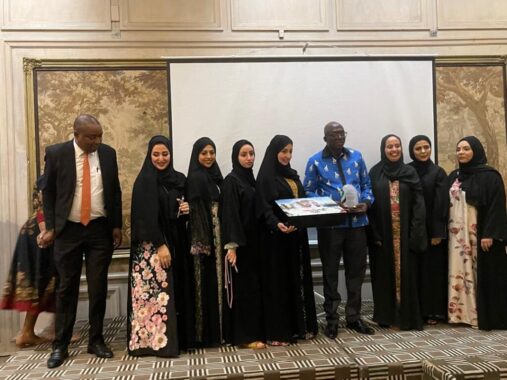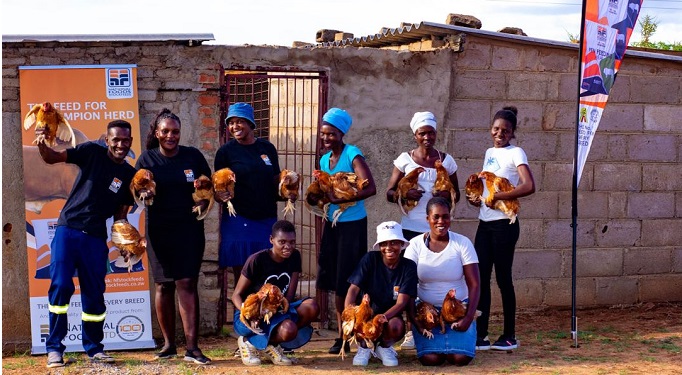Women co-operatives and Intellectual Property

Aleck Ncube, Intellectual Property
WOMEN are smart, motivated and hard working. It is important for women to convert their energy into sustainable income. Discrepancies in opportunities and status among genders are quite pronounced and ingrained. Social and cultural norms, illiteracy and poverty among women, and poor access to basic women’s health services jointly and individually serve as major obstacles preventing women from closing the so-called “gender gap.”
Overcoming these conditions presents a significant challenge for women in the developing world, and creative approaches are needed for incremental success to be realised. Women-run cooperatives do provide a source of income and directly improve women’s economic status.
Intellectual Property Rights (“IPRs”) can help lift disenfranchised women from the oppressive and repressive circumstances in which they live. By stimulating new income generation and creating educational opportunities in rural areas, IPRs have the potential to make a tangible difference for women.
Innovation and IPRs are widely recognised as important drivers for growth in today’s economy. IPRs are critical to a company’s ability to compete in the marketplace.
They can allow a company to build awareness, distinctiveness, and customer loyalty, and to achieve market power. Developing countries typically and readily supply developed nations with raw materials and other commodities.
The price is right, and this supply chain comes without significant risk or investment on the part of the developed world. In general, however, the developed world has not embraced its supply of cheap labour, natural resources, and other goods in a manner that “spreads the wealth.” In a global market where sellers compete for buyers, competition can produce a “race to the bottom,” and little profits or income are left for the sellers.
Another potential vehicle for change can be through IPRs. Intellectual property provides added value and potentially a revenue stream. It can provide an incentive system for women.
The innovative uses of IPRs, in particular by women’s cooperatives, may be the key to attracting corporate funding and ensuring a sustainable source of income for women.
More and more companies are seeking to enhance their corporate responsibility image and may be willing to pay a premium and/or provide funding for social and/or environmental initiatives (e.g. education, training, reforestation, etc.). Buyers may also be willing to pay a premium in exchange for a guarantee of consistent quality, which can be provided through branding and trademarks.
Types of Intellectual Property Rights applicable to women’s cooperatives
IPRs are legally-recognised, exclusive rights granted to authors or inventors for their creations such as inventions, literary and artistic works, brand names, symbols, designs, etc. IPRs include trademarks, copyrights, patents, trade secrets, and rights of publicity.
Women’s cooperatives would benefit from training to better understand the value of innovation and IPRs and to learn how to develop and protect their brands or creations. Even a rudimentary lesson in IPRs can have a major impact. The various rights, in short, are as follows:
λ A trademark is a name, sign, design, or expression which distinguishes products or services of a particular merchant from similar products or services provided by other merchants. Trademarks can embody a basic brand name for a product or service, a geographical indication, or a certification mark.
Trademarks or brand names do not involve costly government fees and can be a valuable tool for building reputation and goodwill. Certification marks in particular can be valued by corporate clients who can use them to appeal to their customers or to distinguish themselves from the competition.
λ A copyright protects the expression of an idea but not the idea itself. Copyrights can protect a broad range of creative or artistic works such as photographs and designs (e.g. handicrafts). While copyright protection itself is not costly, enforcement can be expensive.
λ A patent is a bundle of exclusive rights granted by a government body that protects an invention. Typical subject matter for patents includes a novel product or a process, an ornamental design (e.g. the “look” of a product), and a new plant variety (e.g. a new variety of a flower such as a rose). Developing an invention is often costly and protecting it—obtaining the patent on the invention—also involves significant government fees.
λ A trade secret is confidential information, such as a formula or process, that is not known or reasonably ascertainable, and which can provide its owner with an economic advantage over the competition.
A trade secret is a great alternative to a patent because it does not involve any government fees. An example of trade secret can be a secret ingredient or a secret process that might provide a competitive edge. Maintaining the confidentiality of the secret information is essential to protect the trade secret status of the information.
λ A right of publicity involves the protection of one’s name, image, or likeness.
The IPR examples above can help women close the gender gap, through enhanced and sustainable income, education, and training.
In particular, it is clear that IPRs promoting corporate responsibility (e.g. certification marks) can provide a promising inducement for attracting corporate funding while ensuring a positive social and/or environmental impact.
Women’s cooperatives will need assistance and training in developing their own IPRs or identifying existing certification entities, which can certify them and negotiate benefits on their behalf.
By spreading the model of women’s cooperatives and certification marks, women can find new dignity and opportunities.










Comments